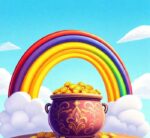- You are here:
- Home »
- words
- » Christmas Words That Start With C [LIST]

Christmas Words That Start With C [LIST]
Christmas is a season filled with joy, celebration, and tradition, and certain words associated with this festive time of year begin with the letter “C”. From decorations to delicious treats, many of the terms we use to describe Christmas are not only meaningful but also evoke a sense of warmth and holiday spirit. Whether you’re searching for words to enhance your holiday vocabulary or simply looking to add a bit of alliteration to your Christmas greetings, this list of Christmas-related words that start with ‘C’ will surely inspire you.
From classic Christmas carols to the iconic Christmas tree, the letter ‘C’ is rich with vocabulary that represents the various aspects of this beloved holiday. Words like “candy canes”, “cookies”, and ‘celebrations’ highlight the sweet and joyful nature of the season, while terms such as ‘Christmas cheer’ and ‘crèche’ offer insight into the spiritual and cultural traditions that make Christmas so special. In this article, we’ll explore a curated list of Christmas words beginning with “C”, perfect for spreading festive cheer and enhancing your holiday conversations.
Christmas Words That Start With C
1. Christmas
Christmas is an annual festival commemorating the birth of Jesus Christ. It is marked by religious services, family gatherings, gift-giving, and festive decorations.
Examples
- Christmas is celebrated on December 25th by Christians around the world.
- Families gather to exchange gifts and enjoy festive meals during Christmas.
2. Carols
Carols are joyful songs traditionally sung during Christmas to celebrate the season. They often tell the story of the birth of Christ or express good wishes for the holiday.
Examples
- The sound of Christmas carols fills the streets during the holiday season.
- Many people enjoy singing carols as part of their holiday traditions.
3. Candy Cane
A candy cane is a hard, striped candy typically flavored with peppermint. Its shape is a crook, symbolizing a shepherd’s staff, and it is a popular symbol of Christmas.
Examples
- The candy cane is a popular Christmas treat shaped like a shepherd’s crook.
- People often hang candy canes on the Christmas tree or use them in holiday decorations.
4. Candle
Candles are commonly used during Christmas as decorations or as part of religious observances, such as the lighting of Advent candles. They symbolize light, hope, and peace.
Examples
- Candles are often placed on Christmas trees and in windows during the holidays.
- The soft glow of candles creates a warm, festive atmosphere during Christmas gatherings.
5. Christmas Tree
A Christmas tree is an evergreen conifer, such as a fir or pine, traditionally decorated with lights, ornaments, and a star or angel on top. It is an iconic symbol of Christmas.
Examples
- The Christmas tree is the focal point of many households during the holiday season.
- Families often decorate their Christmas tree with ornaments, tinsel, and lights.
6. Chestnuts
Chestnuts are edible nuts from the chestnut tree, often roasted over an open flame during Christmas. They are frequently mentioned in Christmas songs and are a festive treat.
Examples
- Roasted chestnuts are a beloved holiday snack, especially popular around Christmas.
- The smell of chestnuts roasting on an open fire is a nostalgic Christmas memory for many.
7. Claus
Claus refers to the legendary figure of Santa Claus, the jolly man in red who delivers gifts to children around the world on Christmas Eve. He is based on Saint Nicholas, a figure known for generosity.
Examples
- Santa Claus is known for his jolly demeanor and his ability to deliver gifts to children worldwide on Christmas Eve.
- Many people dress as Santa Claus for Christmas parties or charity events.
8. Candy
Candy refers to sweet confections, which are often given as gifts or used in holiday baking during Christmas. From chocolates to hard candies, they are a hallmark of holiday indulgence.
Examples
- Candy is often given as a gift during Christmas, especially in festive stockings.
- Christmas-themed candy canes, chocolates, and truffles are popular treats during the season.
9. Cinnamon
Cinnamon is a spice made from the inner bark of trees in the genus Cinnamomum. Its warm, sweet flavor makes it a popular ingredient in holiday baking and cooking during Christmas.
Examples
- Cinnamon is a spice commonly used in Christmas baking, especially in gingerbread cookies.
- The warm scent of cinnamon fills the house during the holidays as it is used in mulled wine and other festive recipes.
10. Carriage
A carriage is a horse-drawn vehicle that is often used in parades and events, including Christmas parades. It is a nostalgic and elegant way to celebrate the holiday season.
Examples
- In some countries, horse-drawn carriages are a charming way to view Christmas lights and decorations.
- The Christmas parade featured a beautiful horse-drawn carriage carrying Santa Claus.
11. Celebration
Celebration refers to the act of marking an occasion with joy and festivity. Christmas is a major celebration for Christians and others around the world, marked by various traditions and gatherings.
Examples
- Christmas is a time for family celebration, with meals, music, and gift exchanges.
- The community’s Christmas celebration included a tree lighting ceremony and festive performances.
12. Chimney
A chimney is a structure designed to channel smoke from a fire. In Christmas folklore, it is the entry point for Santa Claus, who slides down chimneys to deliver presents.
Examples
- Santa Claus is said to enter homes through the chimney to deliver gifts on Christmas Eve.
- Families often decorate their chimneys with stockings hung for Santa to fill with presents.
13. Chocolates
Chocolates are confections made from cocoa beans, often enjoyed as sweet treats during Christmas. They are commonly given as gifts or used in holiday baking.
Examples
- Chocolates in festive shapes, such as Christmas trees and stars, are often exchanged during the holidays.
- A box of assorted chocolates makes a delightful Christmas gift for any sweet tooth.
14. Carve
To carve is to cut something into a particular shape or design. During Christmas, people often carve turkeys or ham for festive meals, and some even carve intricate decorations.
Examples
- Families often carve a Christmas turkey or ham to serve at holiday dinners.
- Some people enjoy carving elaborate designs into pumpkins or other decorations for Christmas.
15. Celebratory
Celebratory refers to anything related to a celebration. During Christmas, celebratory actions include parties, feasts, and religious services to mark the joy of the season.
Examples
- The atmosphere at the Christmas party was celebratory, with music, dancing, and laughter filling the room.
- Celebratory drinks and toasts are a common part of many Christmas gatherings.
16. Comfort
Comfort refers to a sense of ease, warmth, and security. Christmas is a time when people seek comfort through family traditions, delicious food, and cozy moments by the fire.
Examples
- Christmas brings a sense of comfort as families reunite and enjoy each other’s company.
- The comforting aroma of a hot drink by the fire is a quintessential Christmas experience.
17. Crisp
Crisp refers to something that is fresh and pleasantly firm, often used to describe the cold, invigorating air or the texture of certain foods, like cookies or apples, during the holiday season.
Examples
- The crisp winter air is perfect for taking a brisk walk after a Christmas feast.
- Crisp frost on the windows adds to the festive atmosphere of a snowy Christmas morning.
18. Cocoa
Cocoa refers to a drink made from cocoa powder and milk or water, often enjoyed as a warm beverage during Christmas. It is a comforting drink, perfect for the winter season.
Examples
- A warm mug of hot cocoa is the perfect drink to enjoy by the fire on a cold Christmas evening.
- Christmas cocoa mixes often come with marshmallows or peppermint sticks for extra flavor.
19. Crowd
A crowd refers to a large group of people gathered for a specific purpose. During Christmas, crowds often gather for events like parades, tree lightings, and festive markets.
Examples
- A large crowd gathered in the town square for the Christmas tree lighting ceremony.
- The Christmas parade drew a huge crowd of people, all eager to see Santa Claus.
20. Creche
A creche is a model or representation of the scene of Jesus Christ’s birth, typically displayed during Christmas. It includes figures like Mary, Joseph, the baby Jesus, and other nativity characters.
Examples
- Many families set up a creche, or nativity scene, to depict the birth of Jesus at Christmas.
- The church displayed a large creche as part of its Christmas decorations.
21. Cards
Christmas cards are greeting cards exchanged during the holiday season. They often feature festive images and messages of goodwill, and are an integral part of Christmas communication.
Examples
- Sending Christmas cards to friends and family is a long-standing tradition.
- Some people like to personalize their Christmas cards with a family photo or handwritten message.
22. Cracker
A Christmas cracker is a small festive explosive device that makes a popping sound when pulled apart. Inside, it usually contains a small gift, a paper crown, and a joke.
Examples
- Christmas crackers are often pulled at the dinner table, revealing small gifts and jokes inside.
- The tradition of pulling Christmas crackers adds a fun touch to the festive meal.
23. Cold
Cold weather is common during the Christmas season, particularly in the Northern Hemisphere. It sets the stage for winter activities like ice skating, sledding, and enjoying warm beverages.
Examples
- Many parts of the world experience cold weather during Christmas, perfect for winter activities.
- The cold Christmas night was made more cheerful by the warmth of the fireplace.
24. Chilly
Chilly refers to cool or slightly cold temperatures. Many Christmas celebrations take place in chilly weather, adding to the atmosphere of wintertime festivities.
Examples
- A chilly breeze swept through the Christmas market, making people bundle up in scarves and hats.
- The chilly evening air added to the festive mood of the outdoor Christmas concert.
25. Cheer
Cheer refers to a feeling of happiness and celebration. During Christmas, cheer is expressed through festive greetings, music, and community gatherings.
Examples
- The Christmas cheer was evident in the laughter and joy shared around the dinner table.
- People greeted each other with a warm ‘Merry Christmas!’ to spread holiday cheer.
26. Celebrated
Celebrated refers to something that is widely acknowledged and honored. Christmas is one of the most celebrated holidays globally, with various customs and traditions.
Examples
- Christmas is celebrated around the world with unique traditions and customs.
- In many countries, Christmas is a highly celebrated religious and cultural holiday.
27. Countdown
Countdown refers to the process of marking time until a significant event. The countdown to Christmas is often enjoyed through advent calendars, special events, or family traditions.
Examples
- The countdown to Christmas begins on December 1st with the opening of advent calendars.
- Many children eagerly await the Christmas countdown to mark the days leading up to Christmas Eve.
Historical Context

The celebration of Christmas has a rich history, one that spans centuries and involves a fascinating array of customs, rituals, and linguistic developments. Over time, the English language, like many others, has adopted and adapted numerous words to describe both the religious and secular aspects of Christmas. Many of these words begin with the letter "C," a letter that in many ways has come to symbolize the season. Understanding the historical context of these words is integral to appreciating their significance in the modern celebration of Christmas.
The word "Christmas" itself is one of the most obvious examples of a term that begins with "C" and has deep historical roots. The term originates from the Old English phrase Cristes mæsse, which literally means "Christ’s mass." The early Christians began celebrating the birth of Jesus Christ in the 4th century, and this religious observance became intertwined with various winter festivals and traditions that predated Christianity. In fact, many Christmas words reflect a blend of Christian doctrine with pre-existing cultural customs. For instance, words like carol and candle have pagan origins but were later incorporated into Christmas celebrations. Carols, for example, were originally festive songs sung during public celebrations, but with the rise of Christianity, they evolved into hymns celebrating the birth of Christ.
The historical context of Christmas words that start with "C" also ties into the evolution of Christmas as a holiday itself. In the medieval period, the Christmas season was marked by communal feasts and revelry, and the church played a prominent role in shaping the language and traditions of the holiday. Terms like "church" and "clergy" became closely associated with the religious observance of Christmas. In later centuries, as Christmas became more secularized, words like "cheer," "children," and "commercial" began to take on new meanings related to the more festive and consumer-driven aspects of the holiday.
In the 19th century, Christmas underwent a significant transformation, particularly in the Victorian era, which saw the rise of family-centric celebrations, gift-giving, and the modern conception of Santa Claus. Words like "chimney," "cookies," and "card" became prominent in the popular imagination, reflecting both the domestic nature of Christmas and the burgeoning commercialization of the holiday.
Word Origins And Etymology
The etymology of Christmas-related words that start with "C" reveals a fascinating journey through multiple languages and cultures. The evolution of these words reflects how language evolves in response to societal changes, and how Christmas itself has morphed from a purely religious observance to a holiday celebrated by people of many backgrounds and beliefs.
-
Christmas – The word Christmas comes from the Old English Cristes mæsse, which is a compound of Crist (meaning Christ) and mæsse (meaning mass or festival). The word “mass” is derived from the Latin word missa, which originally referred to the dismissal of the congregation at the end of a church service. This term eventually came to refer to the religious ceremony itself, especially the celebration of the Eucharist.
-
Carol – The word carol has an interesting origin, coming from the Old French word carole, which referred to a circle dance accompanied by singing. In the Middle Ages, carols were popular during festivals, especially around Christmas, and were often joyful songs performed as part of communal dances. Over time, the meaning shifted, and carol came to refer specifically to festive songs sung during the Christmas season, although the association with dance has largely faded.
-
Candle – The word candle comes from the Latin candela, meaning "a light" or "torch," derived from the verb candere, meaning "to shine" or "to glow." The use of candles during Christmas celebrations has deep roots, particularly in Christian symbolism. The lighting of candles is a reminder of the birth of Christ, who is often referred to as the "Light of the World," and the tradition of Advent candles (four candles representing the four weeks of Advent) is a central part of the lead-up to Christmas.
-
Cheer – The word cheer originates from the Old French chiere, meaning “face” or “expression.” Over time, it came to represent a joyful or positive expression, and by the 16th century, the term began to be associated with a festive mood or state of happiness, especially during Christmas. Phrases like “Christmas cheer” convey a sense of warmth, joy, and conviviality that are central to the modern celebration of the holiday.
-
Chimney – The word chimney comes from the Old French cheminee, meaning "a fireplace or hearth," derived from chemineé, which referred to the flue or funnel used to carry smoke away from a fire. In the context of Christmas, the chimney is crucial to the myth of Santa Claus, who is said to enter homes through the chimney to deliver gifts to children on Christmas Eve. This association adds a whimsical, magical element to the holiday and underscores the domestic, family-centered aspect of the celebration.
-
Cookies – The modern English word cookies derives from the Dutch word koekje, which is the diminutive form of koek, meaning “cake.” Dutch settlers in America brought this word with them, and it gradually came to refer to the small, individual sweet baked goods we associate with Christmas today. The tradition of baking Christmas cookies is a widespread custom, symbolizing hospitality, family togetherness, and the joy of giving.
Common Misconceptions
There are several common misconceptions surrounding the words associated with Christmas that start with "C." These misconceptions often stem from the blending of cultural traditions, evolving practices, and sometimes, misunderstandings about the origins of certain terms. Here are a few:
-
Carols are exclusively religious – While carols today are often associated with Christmas and with Christian religious traditions, the origins of the word carol are secular. Carols were originally celebratory songs, many of which were sung during festivals, not necessarily religious ones. It wasn’t until the 12th century that carols became specifically associated with Christmas. The misconception is that carols are always hymns or religious in nature, but in fact, many modern carols are secular and focus on general themes of joy and celebration.
-
Santa Claus only comes through the chimney – While the chimney is certainly a key part of the Santa Claus mythos, the idea that he only enters through the chimney is a relatively modern invention. In earlier versions of the Santa Claus story, Santa was believed to visit homes in various ways, such as through windows or doors. The chimney became the dominant method in part due to popular literature, like Clement Clarke Moore’s 1823 poem “A Visit from St. Nicholas,” where Santa is famously described as “filling all the stockings” through the chimney.
-
Christmas trees were always a part of the celebration – While Christmas trees are now a central element of Christmas celebrations in many cultures, they are a relatively modern addition to the holiday. The tradition of decorating trees is believed to have originated in 16th-century Germany. It wasn’t until the 19th century, with the influence of Queen Victoria and Prince Albert in England, that the decorated Christmas tree became widely adopted across Europe and North America. The misconception is that Christmas trees have always been integral to the holiday, but they actually became widespread only in the 1800s.
-
The word "cheer" has always been associated with Christmas – While we commonly associate the word cheer with Christmas today, its use in the context of the holiday is relatively recent. The phrase "Christmas cheer" became popular in the 19th century, particularly after the publication of Charles Dickens’ A Christmas Carol, which emphasized themes of generosity, kindness, and goodwill. Before that, cheer was more commonly used to denote general happiness or good health, not specifically tied to Christmas.
Conclusion
The words associated with Christmas that start with "C" carry with them not only the weight of centuries of linguistic evolution but also the deep historical and cultural meanings that continue to shape the holiday. From the religious significance of "Christ" in Christmas to the secular joy embodied in terms like "cheer" and "cookies," each word has its own story to tell, one that reflects the changing ways in which Christmas has been celebrated around the world.
Understanding the historical context, etymology, and common misconceptions about these words helps us appreciate the multifaceted nature of Christmas itself. Whether through the religious rituals of the mass, the secular fun of caroling, or the warmth of the candlelight, these words remind us of the many ways we have found to mark this special time of year, creating a language that is as rich and varied as the holiday itself.








